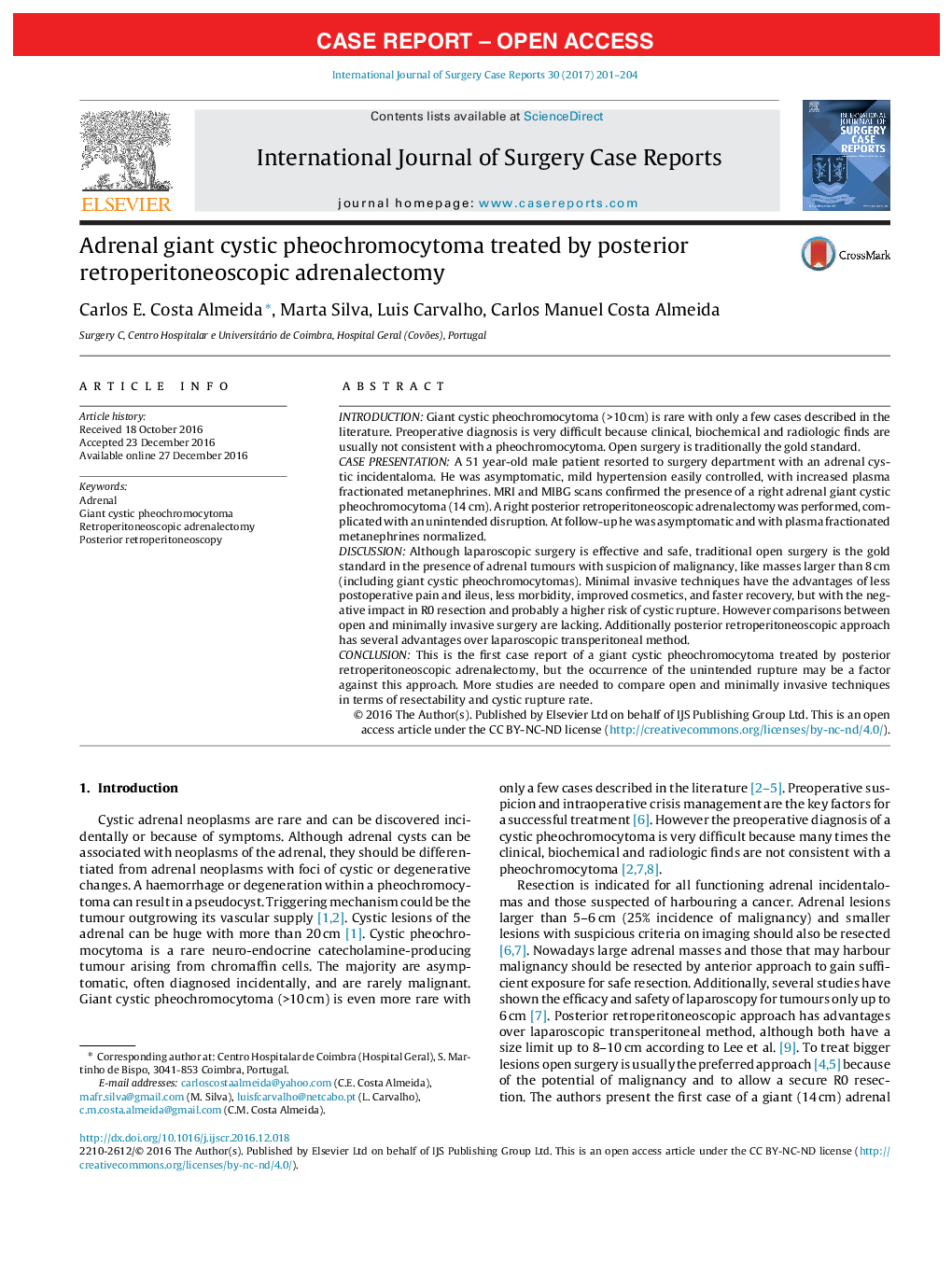| Article ID | Journal | Published Year | Pages | File Type |
|---|---|---|---|---|
| 5732613 | International Journal of Surgery Case Reports | 2017 | 4 Pages |
â¢Giant cystic pheochromocytoma is a rare entity.â¢Preoperative diagnosis is very difficult to obtain.â¢Open surgery is the gold standard to treat these giant masses, but comparison studies are lacking.â¢Posterior retroperitoneoscopic approach has advantages over transperitoneal laparoscopic method.â¢This is the first report of a giant cystic pheochromocytoma treated by posterior retroperitoneoscopic adrenalectomy.
IntroductionGiant cystic pheochromocytoma (>10Â cm) is rare with only a few cases described in the literature. Preoperative diagnosis is very difficult because clinical, biochemical and radiologic finds are usually not consistent with a pheochromocytoma. Open surgery is traditionally the gold standard.Case presentationA 51 year-old male patient resorted to surgery department with an adrenal cystic incidentaloma. He was asymptomatic, mild hypertension easily controlled, with increased plasma fractionated metanephrines. MRI and MIBG scans confirmed the presence of a right adrenal giant cystic pheochromocytoma (14Â cm). A right posterior retroperitoneoscopic adrenalectomy was performed, complicated with an unintended disruption. At follow-up he was asymptomatic and with plasma fractionated metanephrines normalized.DiscussionAlthough laparoscopic surgery is effective and safe, traditional open surgery is the gold standard in the presence of adrenal tumours with suspicion of malignancy, like masses larger than 8Â cm (including giant cystic pheochromocytomas). Minimal invasive techniques have the advantages of less postoperative pain and ileus, less morbidity, improved cosmetics, and faster recovery, but with the negative impact in R0 resection and probably a higher risk of cystic rupture. However comparisons between open and minimally invasive surgery are lacking. Additionally posterior retroperitoneoscopic approach has several advantages over laparoscopic transperitoneal method.ConclusionThis is the first case report of a giant cystic pheochromocytoma treated by posterior retroperitoneoscopic adrenalectomy, but the occurrence of the unintended rupture may be a factor against this approach. More studies are needed to compare open and minimally invasive techniques in terms of resectability and cystic rupture rate.
